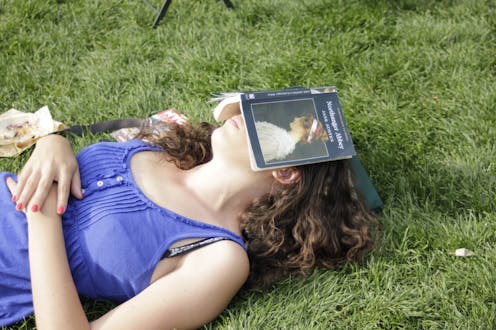
What does it mean to be a reader in Jane Austen’s novels? And what does it mean to read them? Susan Allen Ford, longtime editor of the Jane Austen Society of North America’s journals, confesses to perhaps 25 years of fascination with her subject.
She makes no claim to completeness for her book, What Jane Austen’s Characters Read (And Why), nor does she promise “an understanding of Jane Austen that will overturn all previous readings”. Instead, she sees her book as a “continued exploration”.
And what a book it is!
In her introduction, Ford explores various characters’ use and misuse of reading. For example, the scene in Pride and Prejudice where Caroline Bingley, trying to attract the attention of the rich Fitzwilliam Darcy, accuses heroine Elizabeth Bennet of being interested in nothing but reading. When he responds that extensive reading is a necessary attribute of an accomplished woman, the intended barb backfires.
Review: What Jane Austen’s Characters Read (and Why) – Susan Allen Ford (Bloomsbury)
Ford introduces the concept of the “model reader” – the ideal reader Jane Austen might have imagined for her writings. She adopts the idea from the great Italian novelist and academic Umberto Eco, who regarded this reader as one who was willing to observe the rules, and eager to play the game, of the novelist.
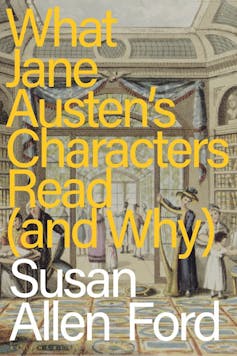
This concept allows Ford the freedom to speculate about the allusions to books of all kinds she finds throughout Austen’s novels: from the poetry of William Cowper and the gothic fiction of Ann Radcliffe, to the many “conduct books” that set out the supposed duties of the female sex, and fashionable anthologies (such as Elegant Extracts, which Austen owned, and gifted to her then eight-year-old niece).
Austen’s model reader will get all her jokes, and will understand all the quotes and passing references 21st-century readers will puzzle over (and possibly google), or pass over without a second thought, depending on their disposition.
Ford explains in the last pages of her book that “the construction of the model reader that I’ve traced through Austen’s use of reading characters is itself a kind of fiction”. This model reader might never have existed. (If she did, she was probably Jane Austen’s sister Cassandra, her best friend and life-long companion.)
Ford’s is an informed personal view, like any good scholarly reading of literature. Others carrying out the same exercise would make different discoveries.

Jane Austen’s reading
What did Austen read? In her first chapter, Ford shares what information we have, as far as it can be established from sources outside the novels: the books she owned herself, the books available in her father’s library and the libraries of houses she visited, and the books she may have borrowed from circulating libraries.
Among the 20 or so books of her own were volumes as varied and exotic as Arnaud Berquin’s realistic children’s stories L’ami des enfants (in French), and John Bell’s Travels from St. Petersburg in Russia to Diverse Parts of Asia.
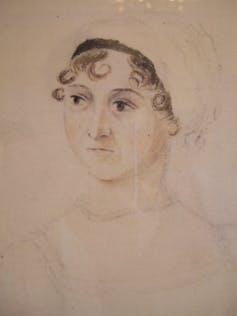
Her marginalia in books like Oliver Goldsmith’s The History of England, which she read in her teenage years and lampooned in her own History of England, are extensive. They include the immortal phrase: “Oh! Dr Goldsmith, Thou art as partial an Historian as myself!”
Six chapters chart the novels in order, though the allocation is not as neat as you might expect. Chapter two covers both Northanger Abbey and Sense and Sensibility, noting their extensive engagement with existing genres. The gothic romance and the novel of sensibility are just the two of most obvious examples.
However, Ford is not just cataloguing intertextual relationships – she always moves beyond the obvious to draw out new and intriguing possibilities. Each chapter begins with a particular genre which will be considered in the context of the novel in question. For Pride and Prejudice, it is the “conduct literature” of the time – the many books aimed at correcting and improving young people, usually young women.
Chapters four and five both concern Mansfield Park, perhaps Austen’s most complex novel, centred on the silent, watchful endurance of Fanny Price, who is brought as a child to live at Mansfield Park with her rich relatives.
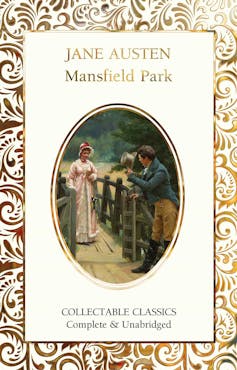
The first is centred on Lover’s Vows, a play that is central to the novel’s plot – and, it could be argued, its theme. The play concerns extramarital sex, illegitimate offspring, and independent-minded women. Naturally, Ford does not simply map the play onto the novel – that has been done many times before. She draws subtle illumination from the interaction of the two texts.
Chapter five considers the novel’s characters as readers, in particular the way Fanny’s reading informs her perspective on the world beyond Mansfield. Although she is habitually stuck at home with her aunts, she is familiar with astronomy and foreign travel from her reading: she can look beyond the petty intrigues and pastimes of her cousins and other characters.
These two chapters on Mansfield Park (in my view Austen’s richest and most rewarding novel, and one that is often, in Ford’s words, regarded as the “most vexing”) left me awed at their insight, their subtlety, and their brilliance.
Gothic shadows, romance and realism
Chapter six shows us “the encroachment of gothic shadows” on the world of Emma. Here, Austen is playing an even more interesting game than in Northanger Abbey, her acknowledged gothic novel. As Ford writes, she “questions the power of narrative to explain, to cohere”. She “celebrates authorial design, the design of the imaginist, acknowledging the central mysteries of the self, the other, of human relationships, of love”.
In Emma, Austen famously perfects the authorial sleight of hand called “free indirect discourse”: she slips from the narrator’s voice into the character’s mind without most readers being aware, subtly suggesting Emma’s ironies and fallibilities without having to explain.
Chapter seven takes us, of course, to Austen’s last completed novel, Persuasion, in which Anne Elliot lives with the memory of her lost love while coping with the insistent daily demands of her family, to whom she is “only Anne”. As Ford writes, the novel holds “romance and realism in tension”. This is not a bad single summary of the whole of Austen’s works – at least, the adult writings.
Ford’s concluding chapter takes us to the tantalising first 15 chapters that are all that exists of Austen’s last novel Sanditon, which features a glorious cast of hypochondriacs and speculators in a newly established seaside resort. It was left unfinished when she died.
An archly playful invitation, declined
I don’t think I’m alone in finding few of Austen’s immediate predecessors and contemporaries especially readable. I am ashamed how little I know of the books she would have read.
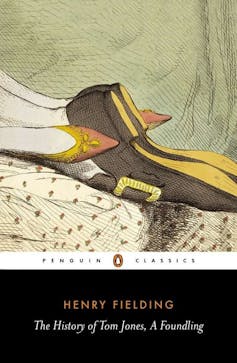
I have read and enjoyed Henry Fielding, author of Tom Jones and regarded by some as one of the founders of the English novel; Samuel Richardson, who pioneered the epistolary novel (or novel in letters); and Frances Burney, whose Evelina is considered a landmark in the novel of manners. Others I have tried and left off – like Northanger Abbey’s Catherine Morland and her piano lessons – with relief.
My excuse would be that these works are not essential to any of my own research projects; my reason is that they are just not enjoyable and absorbing like Austen’s novels. She single-handedly raised the bar for long-form prose fiction in her time.
I can see that reading some of these works would inform my study of Austen’s musical background, but I can also rejoice that Ford has read them on my behalf. Of Fordyce’s Sermons, one of the most celebrated of the “conduct books” of the time, beloved of Mary Bennet and Mr Collins in Pride and Prejudice, Ford tells us its author, Scottish Presbyterian clergyman James Fordyce:
may not tickle our ears as he did those of his contemporaries, but the curious will find their experience of Austen’s novels […] heightened by a trudge through his orotund complacencies.
This archly playful invitation is worthy of Austen herself. It might almost be a quotation from one of her letters – and I have no trouble declining it. I thus fail to attain the standard of Austen’s “model reader”. I also fall far short of Ford’s own version of a model reader – one of the curious who would be eager to trudge in her footsteps.
Reading this book does, however, vastly increase my already considerable respect for the redoubtable Ford, a dedicated Austen scholar of extraordinary penetration and erudition. This is one of those rare publications that combines the rigours of scholarly work with the seductions of witty and extremely readable prose.
I have published several articles in publications edited by the author of the book under review, but I have not met her in person.
This article was originally published on The Conversation. Read the original article.







